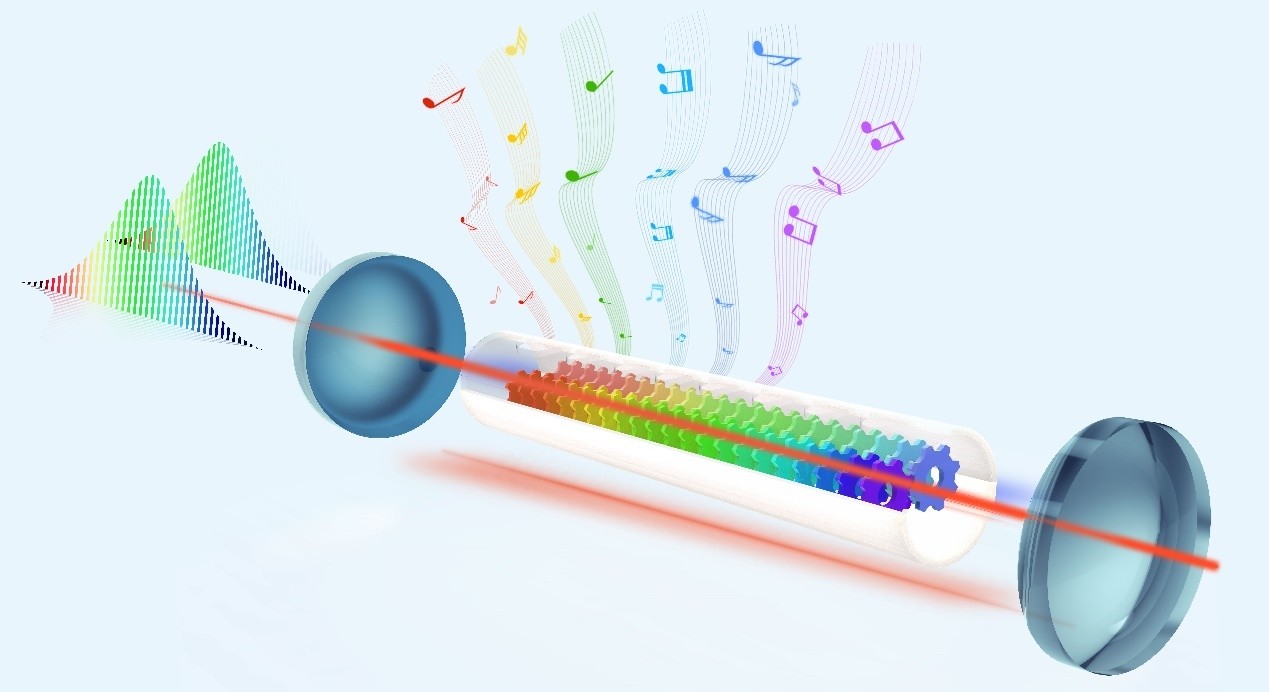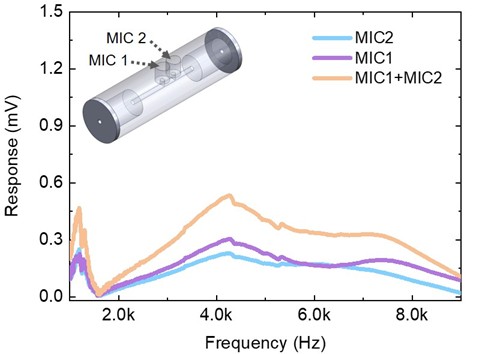Author: Professor Ren Wei, Department of Mechanical and Automation Engineering
The dizi, a Chinese bamboo flute, is a major musical instrument widely used in many genres of Chinese folk music and Chinese opera. Inspired by the bamboo flute, Professor Ren Wei's team in the Department of Mechanical and Automation Engineering proposed a new concept of cavity-enhanced photoacoustic dual-comb spectroscopy for high sensitivity, wide bandwidth, high resolution and fast spectroscopic measurement. The breakthrough was recently published in the prestigious journal Light: Science & Applications, and selected as the cover article (Volume 3, Issue 4).
Over the past two decades, frequency comb spectroscopy has evolved into a powerful tool for high precision spectroscopy and metrology, spectral lidar, and environmental monitoring. In particular, dual-comb spectroscopy uses two frequency combs with a small difference in the repetition frequency for asynchronous optical sampling, showing the advantages of high resolution, broadband coverage and rapid measurement. However, traditional dual-comb spectroscopy extracts spectral information from the transmitted light through the gas sample, which suffers from severe optical background interference, and the limited gas absorption length also limits the detection sensitivity. This direct optical comb detection method often relies on high-bandwidth photodetectors, high-speed data acquisition cards, and complex spectral analysis technology, which severely limits the wide application of dual-comb spectroscopy.
Prof. Ren’s team proposed the method of cavity-enhanced photoacoustic dual-comb spectroscopy to solve the bottleneck issue. In this method, as shown in Figure 1, a high-finesse optical cavity is used to break through the energy bottleneck of the frequency comb, achieving nearly 1000 times of optical power enhancement. A unique bamboo flute-type broadband acoustic resonator is designed to achieve broadband (> 5 kHz) acoustic amplification. Based on this method, the spectral information of three gases, acetylene, ammonia and carbon monoxide, in the entire telecom C-band was experimentally measured, demonstrating detection sensitivity at the ppb level. 
Figure 1. Conceptual diagram of cavity-enhanced photoacoustic dual-comb spectroscopy.
Based on the electro-optic dual-comb light source, the multiheterodyne beating of each pair of comb teeth generates the intensity modulation of the specific comb line absorbed by the target gas molecules. Since the generated photoacoustic effect is proportional to the optical power, the two sets of frequency combs are coupled into the optical cavity at the same time to achieve significant amplification of the dual-comb light power. The broadband acoustic resonator is the core component for realizing the proposed photoacoustic dual-comb spectroscopy. The team invented bamboo flute-type resonator so that the superimposed acoustic signal has broadband and flat frequency response characteristics, with the results shown in Figure 2. Ultimately, each pair of optical comb teeth enhanced by the cavity interacts with gas molecules to simultaneously excite more than 200 sound waves of different frequencies, which are equally spaced within the 3-dB bandwidth amplification range of the acoustic cavity.  Figure 2 Design of the broadband acoustic resonator and its frequency response Figure 2 Design of the broadband acoustic resonator and its frequency responseUsing this new spectroscopic approach, Prof. Ren’s team experimentally measured the near-infrared spectra of trace amount of acetylene (10 ppm), ammonia (50 ppm) and carbon monoxide (1%) over 5 THz (40 nm), as shown in Fig. 3. Taking acetylene as an example, the system achieves a minimum detection limit of 0.6 ppb, corresponding to a noise equivalent absorption coefficient of 7×10 -10 cm -1. Hence, this new method shows leading detection performance in the current field of frequency comb spectroscopy, and can achieve more sensitive and faster spectral analysis in a wide band range. In the future, combining photoacoustic multi-physics coupling design, MEMS technology and integrated optics, the system performance and environmental adaptability will continue to improve, providing a new analytical tool for cutting-edge scientific exploration and research. 
Figure 3 Spectral measurement of acetylene (10 ppm), ammonia (50 ppm) and carbon monoxide (1%).
|
